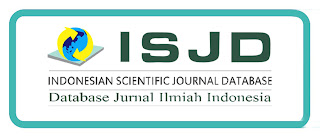Sentiment Analysis on Tiktok Application Reviews Using Natural Language Processing Approach
(1) Universitas Global Jakarta
(2) Universitas Global Jakarta
(3) Institut Teknologi Telkom Purwokerto
(*) Corresponding Author
DOI: https://doi.org/10.26858/jessi.v4i1.41897
Abstract
Keywords
Full Text:
PDFReferences
E. Adiwaluyo, "Research: Shopee Becomes the Number One e-Commerce Platform in Indonesia," Marketeers, December 2, 2019. [Online].Available:https://marketeers.com/shopee-jadi-platform-e-commerce-numbersatu-in-indonesia/.
Mounika, A. and Saraswathi, D. S. (2019) Classification Of Book Reviews Based On Statement Analysis: A Survey. India
Ratri, H. D. (2018) 'The Relationship between Social Media Use and Adolescent Self-Esteem Levels in SMA Negeri 2 Jember'.
Liu, B. ( 2012) 'Sentiment analysis and opinion mining', Synthesis lectures on human language technologies, 5(1), pp. 1–167.
Hs, F. G. S. H. H. (2012) 'Analysis of the application of 4G LTE network technology in Indonesia', UNIKOM scientific magazine.
Vinodhini, G. and Chandrasekaran, R. M. (2012) 'Sentiment analysis and opinion mining: a survey', International Journal, 2(6), pp. 282–292.
O. Bharti, and M. Malhotra, "Sentiment analysis," International Journal of Computer Science and Mobile Computing, vol. 5, pp. 625-633, 2016.
N. H. Surve, "Sentiment analysis using natural language processing (NLP)," International Research Journal of Engineering and Technology, vol. 6, pp. 1240-1244, 2019.
R. Arief, and K. Imanuel, "Sentiment analysis of viral topics of dancer villages on social media twitter with lexicon based method," Journal of Mathematical Sciences, vol. 21, pp. 242-250, 2019.
A. Jurek, M. D. Mulvenna, and Y. Bi, "Improved lexicon-based sentiment analysis for social media analytics," Security Informatics, vol. 4, pp. 1-13, 2015.
M. Mhatre, D. Phondekar, P. Kadam, A. Chawathe, and K. Ghag, "Dimensionality reduction for sentiment analysis using pre-processing techniques," in 2017 International Conference on Computing Methodologies and Communication (ICCMC), 2017, pp. 16–21, doi: 10.1109/ICCMC.2017.8282676.
L. A. Mullen, K. Benoit, O. Keyes, D. Selivanov, and J. Arnold, "Fast, Consistent Tokenization of Natural Language Text," J. Open Source Softw., vol. 3, no. 23, p. 655, 2018, doi: 10.21105/joss.00655.
B. P. Pande and H. S. Dhami, "Application of Natural Language Processing Tools in Stemming," Int. J. Comput. Appl., vol. 27, no. 6, pp. 14–19, 2011, doi: 10.5120/3302-4530.
A. K. Putra, R. D. Nyoto, and P. H. Sasty, "Design and Build a Web-Based Private Tutoring Service Provider Marketplace Application in Pontianak City," J. Sist. and Teknol. Inf., vol. 5, no. 1, pp. 22–25, 2017
A. Prakash and U. Kumar, "International Journal of Computer Sciences and Engineering Open Access Authentication Protocols and Techniques : A Survey," no. March,2019,doi:10.26438/ijcse/v6i6.10141020.
R. Melita, V. Amrizal, H. Suseno, and T. Dirjam, "Application of the Term Frequency Inverse Document Frequency (Tf-Idf) Method and Cosine Similarity to the Information Retrieval System to Know Web-Based Hadith Sharah (Case Study: Hadith Shahih Bukhari-Muslim)," J. Tek. Inform., vol. 11, no. 2, pp. 149–164,Nov.2018,doi:10.15408/jti.v11i2.8623.
K. Norman, Z. Li, Y. T. Oh, G. Golwala, S. Sundaram, and J. Allebach, "Application of natural language processing to an online fashion marketplace," IS T Int. Symp. Electron.ImagingSci.Technol.,pp.1–5, 2018,doi:10.2352/ISSN.2470-1173.2018.10.IMAWM-444.
A. Tharwat, "Classification Assessment Methods," Appl. Comput. Informatics, no. January,2018, doi: 10.1016/j.aci.2018.08.003.
J. Asian, H. E. Williams, and S. M. M. Tahaghoghi, "Stemming Indonesian," Conf. Res. Pract. Inf. Technol. Ser., vol. 38, no. January, pp. 307–314, 2005, doi: 10.1145/1316457.1316459
V. Jahjah, R. Khoury, and L. Lamontagne, Word Normalization Using Phonetic Signatures. 2016.
Article Metrics
Abstract view : 518 times | PDF view : 107 timesRefbacks
- There are currently no refbacks.
Indexed by:



















Journal of Embedded Systems, Security and Intelligent Systems (JESSI) is licensed under a Creative Commons Attribution-ShareAlike 4.0 International License












 Email : jessi@unm.ac.id
Email : jessi@unm.ac.id